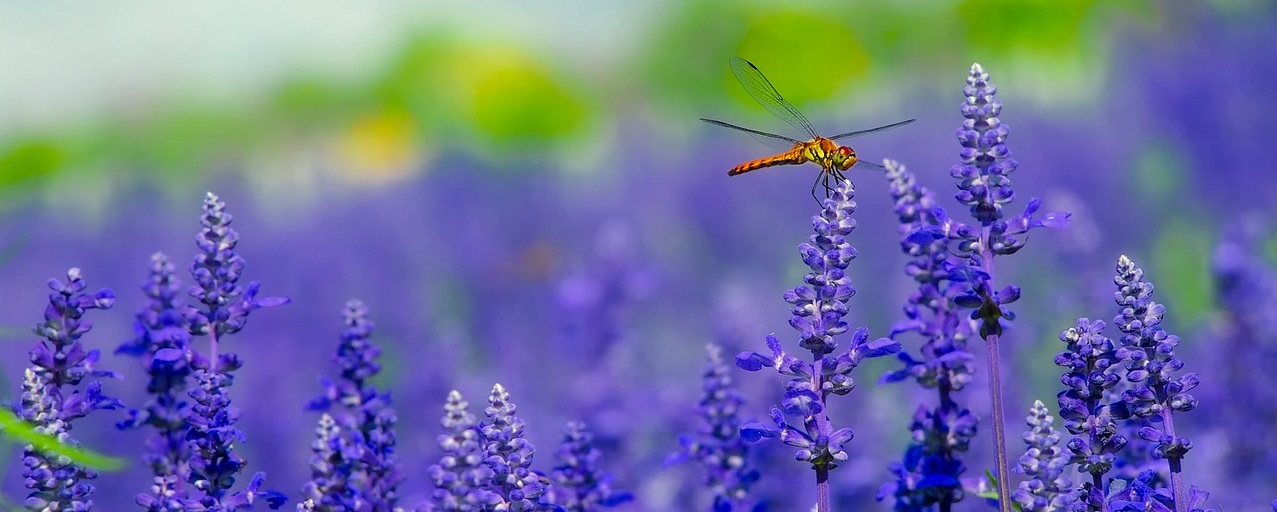In the first years of the 20th century, Austrian poet Rainer Maria Rilke corresponded with a young army cadet and aspiring poet, Franz Xaver Kappus, in a series of letters later published as the collection Letters to a Young Poet. In his first letter, Rilke demurred to evaluate Kappus’s poems, saying: “Nobody can advise you and help you, nobody. There is only one way. Go into yourself.” But their continued correspondence and Rilke’s advice on how a poet must experience the world to create art became a beloved book to generations of writers to come.
Rilke’s claims put writing teachers in a difficult position. How does the teacher guide a young student into themself? Inspire creativity? Foster the self-insight, discipline, and technical growth necessary to writing? To address these questions, Teachers & Writers Magazine asked four veteran creative writing teachers to share their thoughts on teaching writing in a series of “Letters to a Young Teacher.” Drawing on experience that spans from second grade classrooms to memory care units, these teachers share pearls of wisdom—and calls to action—for new educators to draw upon as they start their teaching journeys.
The first decision you’ll be faced with is: are you a teacher who writes or a writer who teaches?
Janée J. Baugher
From Janée J. Baugher
The first decision you’ll be faced with is: are you a teacher who writes or a writer who teaches? Teaching can be a job, a career, or a calling. If you’re a writer, protect the sanctity of that enterprise. Strive for a teaching life that’s compatible with your writing life. Find a mentor who’ll advise you, “A teacher teaches but a student must student” and “Just stay one lesson ahead of your students, don’t fret over the entire syllabus.” Remember the “creative” in every lesson. Encourage your students to investigate, invent, and innovate. Reward the students for balderdash, nonsensical sentences, kooky juxtapositions, and crazy syntax. Remember the “writing” part. Students should know that art is process, not product. Guide them to finding a practice. Join your students during in-class writing time. Push the desks and chairs away. Write upside down, write while walking, write in the dark, write in other languages, write long-handed, write in order to see that “what’s within you is beyond you” (Paul Valéry), write because you are astonished, write because you have the ability and the freedom to do so (which is not true everywhere in the world).
Recognize the limitations of each class. Your adult students in a psychiatric hospital have different challenges than high school students who differ from MFA students who differ from students who reside in a memory care unit of a nursing home. If your students are old, assign the essay “Freewriting” by Peter Elbow. In it, they’ll learn how to allow their ideas to flow on the page without conscious intent. If your students are young, they probably already instinctively know that technique, though perfectionism can be their weakness. For mistake-phobic students, take a pristine sheet of white paper, crumple it up, smooth it out and hand it back to them. If that doesn’t work, take a new sheet of paper, place it on the floor and stomp on it with the dirty souls of your work boots. Hand it back to them. Tell them, “The page is already ruined, you can’t do any worse.” Whether or not you affect a student’s life in a positive way, you will probably never know. Trust yourself and remember that art starts with play. Discovering our voice, our source of power, is the best lesson of all.
Janée J. Baugher is the author of The Ekphrastic Writer: Creating Art-Influenced Poetry, Fiction and Nonfiction (craft book) and two poetry collections, The Body’s Physics and Coördinates of Yes. She’s been featured at the Library of Congress, has taught for 20 years, and was awarded a 2024 Seattle City Artist grant. www.janeebaugher.com
What you have is what you have and the pleasure in that is that it can be more than you imagined.
Asiya Wadud
From Asiya Wadud
During the daytime, I teach poetry to young children. I bring them the work that has dazzled me: Kamila Shamsie, Harryette Mullen, Adam Gianelli, Claire Wahmanholm, Eloise Greenfield, Wisława Szymborska, Jamaal May, Georges Perec, and so many others. Constraint and all its long arms often find their way into our conversations, sometimes because the puzzle that constraint makes of a poem can feel counterintuitive to the limitless freedom of writing a poem in the first place. But limits can also invite their own breadth, widening scope, expansive moment, and leisure. When writing with young children, say second graders, I sometimes think of constraint as an endless experiment-loop since the tight window of the limit means that you have to be decisive. In that decision though, there is still a chance to change your mind—no poem is final.
This is the tightrope that we often walk in second grade poetry—the space between the constraint and the ever-present possibility to animate the poem with new worlds. This might mean making slight adjustments to single words or to changing the order of the words on the page or adjusting the line breaks. This potentially endless reconfiguring is prismatic in its range and continual effort. I try to encourage this tactile play with language in the classroom. We are given something but the beauty comes in making it our own. Do not let the constraint of a concrete lune (a three-line poem with a three-word/five-word/three-word structure) limit what you wish to say—how you wish the poem to exist. The constraint is kaleidoscopic in its scope. I sometimes think of it as a series of quarter turns, with a minor change emerging in each new permutation. For this reason, I keep returning to the idea of “given limits exist,” which Inger Christensen notes in Alphabet, her incantatory book-length poem that rests within the frame of both the abecedarian form and the Fibonacci sequence. What you have is what you have and the pleasure in that is that it can be more than you imagined.
Asiya Wadud is the author of five poetry collections, most recently Mandible Wishbone Solvent and No Knowledge Is Complete Until It Passes Through My Body. Her work appears in e-flux journal, BOMB Magazine, Triple Canopy, POETRY, Yale Review, and elsewhere. Asiya’s work has been supported by the Foundation Jan Michalski, Lower Manhattan Cultural Council, Danspace Project, Finnish Cultural Institute of New York, Rosendal Theater Norway, Beirut Arts Center, and Kunstenfestivaldesarts, among others. She lives in New York City where she teaches poetry at Saint Ann’s School, Columbia University, and Pacific Northwest College of Art. www.asiyawadud.com
A good teacher is fully present and generous first. Talent and ability are much more common than those other two qualities.
Ernesto Mestre-Reed
From Ernesto Mestre-Reed
When my brother was in medical school, in one of the first classes, he was given a simple guide to his path to becoming a great medical professional. It involved primarily three qualities that I always found very inspiring, both as a teacher of writing and as a fiction writer. It is the rule of the Three A’s: availability, affability, and ability. I always found it interesting that “ability” or talent came at the end of this list and that availability is at the top. Showing up and being present and available for the work of the young writers that we teach is by far the most important element that I think makes for an inspiring teacher. Your generosity of spirit and abilities as a reader, I think, come a far second. A teacher has to be present for the work of her students and take it as seriously as she takes her own work. This, by the way, is a great lesson for them as young writers, also. You have to be present for your work—continually, perennially, and vocationally. For the thing itself and for no other reason.
This is not to downplay affability and ability. They are important, as well, but they cannot exist without the first one. A generosity of spirit and an affable critical mind in reading drafts of young writers allows us not just to be more readily available but also makes us better readers of our own drafts; we become better writers through continually reminding ourselves of the sculptor-with-a-chisel patience necessary to make problematic drafts into alluring tales. Talent as a reader and ability, of course, cannot be discounted, but I think of the three as the least necessary quality and one which writers, when seeking readers of drafts, should consider not as mandatory as the other two. A good teacher is fully present and generous first. Talent and ability are much more common than those other two qualities.
Ernesto Mestre-Reed has taught fiction writing at Sarah Lawrence, Brown, University of Virginia, City College of New York, and Brooklyn College. His most recent novel is Sacrificio.
Sometimes when the world is burning—both literally and metaphorically from natural and geopolitical disasters, from illness and hunger—I wonder why I teach poetry. I wonder why it matters.
Chet’la Sebree
From Chet’la Sebree
Sometimes when the world is burning—both literally and metaphorically from natural and geopolitical disasters, from illness and hunger—I wonder why I teach poetry. I wonder why it matters. As I doomscroll the news, I lament that I’m not doing more as I read student drafts and prepare for craft discussions. The work I do feels like such a luxury. In “Poetry Is Not a Luxury,” Audre Lorde writes that poetry, “as the revelation or distillation of experience,” is “a vital necessity of our existence” and that through it “our hopes and dreams toward survival and change [are] first made into language, then into idea, then into more tangible action.” When I revisit her language, especially when I’m drawn to dismissing the work that I do as an educator, I am reminded that it matters. I hope you do, too. It may not be that your students go on to write poems that speak to a generation like John McCrae’s “In Flanders Fields” or Audre Lorde’s “A Litany for Survival.” But you never know how a lesson on iambic pentameter will impact a student who goes on to think about the propulsive power of cadence as a speechwriter.
In our classrooms, we teach students to problem solve, to be generous humans, to think critically about content that might be challenging for them. We’re teaching them to be citizens in the world through being citizens of the classroom. This, itself, is activism. We seek to influence the future through our investment in the students. Some days, I know, it doesn’t feel like enough. But it is something, and it’s important. I promise.
Chet’la Sebree is the author of Field Study, winner of the 2020 James Laughlin Award from the Academy of American Poets, and Mistress, 2020 NAACP Image Award for Outstanding Literary Work-Poetry nominee. She is an assistant professor at George Washington University and faculty in the Low-Residency MFA in Creative Writing program at Randolph College.
Photo by cottonbro studio from Pexels.

Sage Behr
Sage Behr (she/her) is a writer and clown from Iowa City, Iowa. She graduated from Stanford University in 2016 with a degree in Comparative Literature. In 2022, she was awarded a Fulbright Arts Research Fellowship to study clowning in Brazil. Her creative writing has been published in Cutleaf Journal and Peach Mag, and her journalism in the CS Monitor, Hyperallergic, and Chicago's South Side Weekly. Currently, she is pursuing an MFA in Fiction at Brooklyn College, where she is also a "young teacher" (adjunct) in the English department. Sage likes cats, dogs, and reading.



